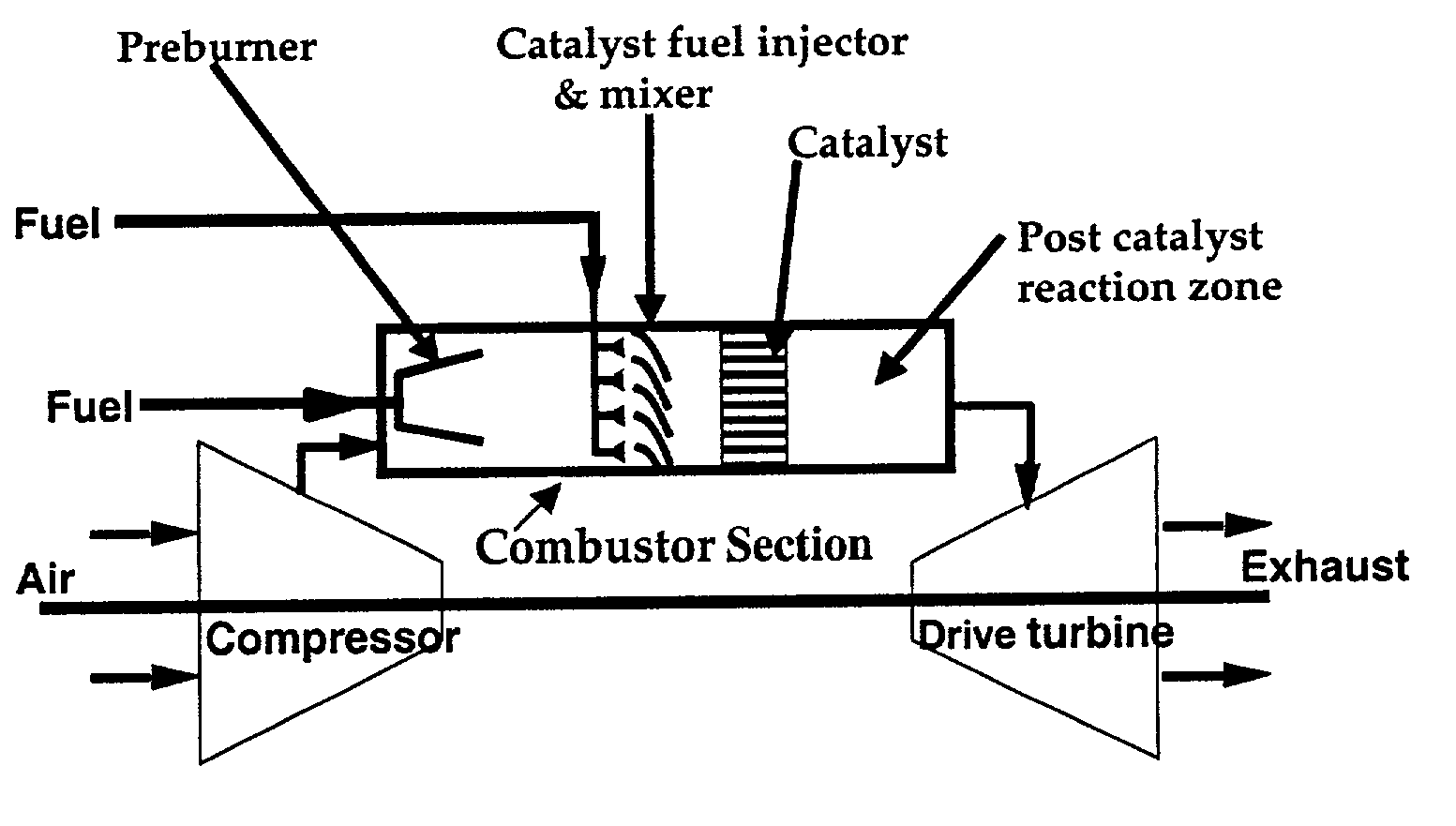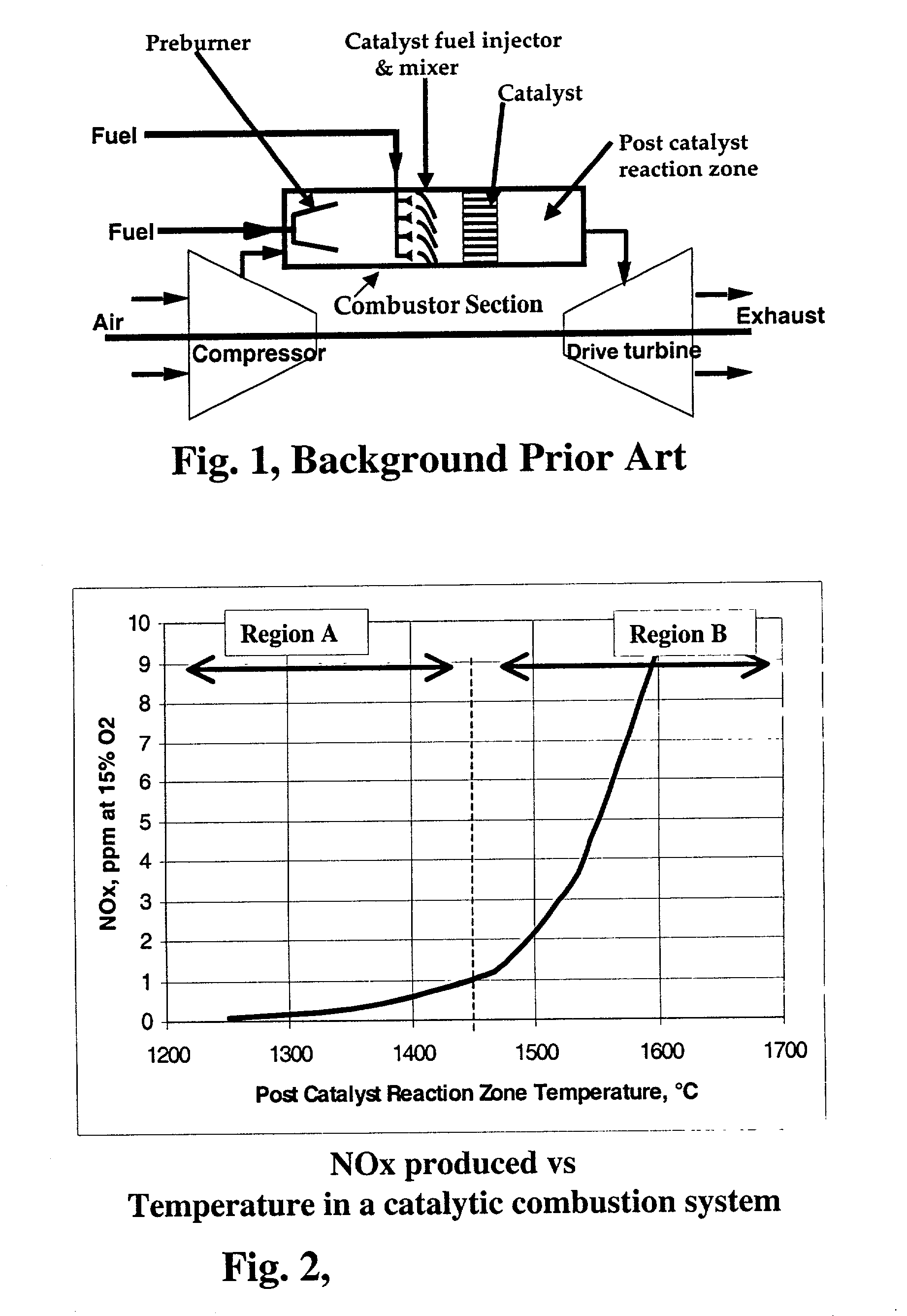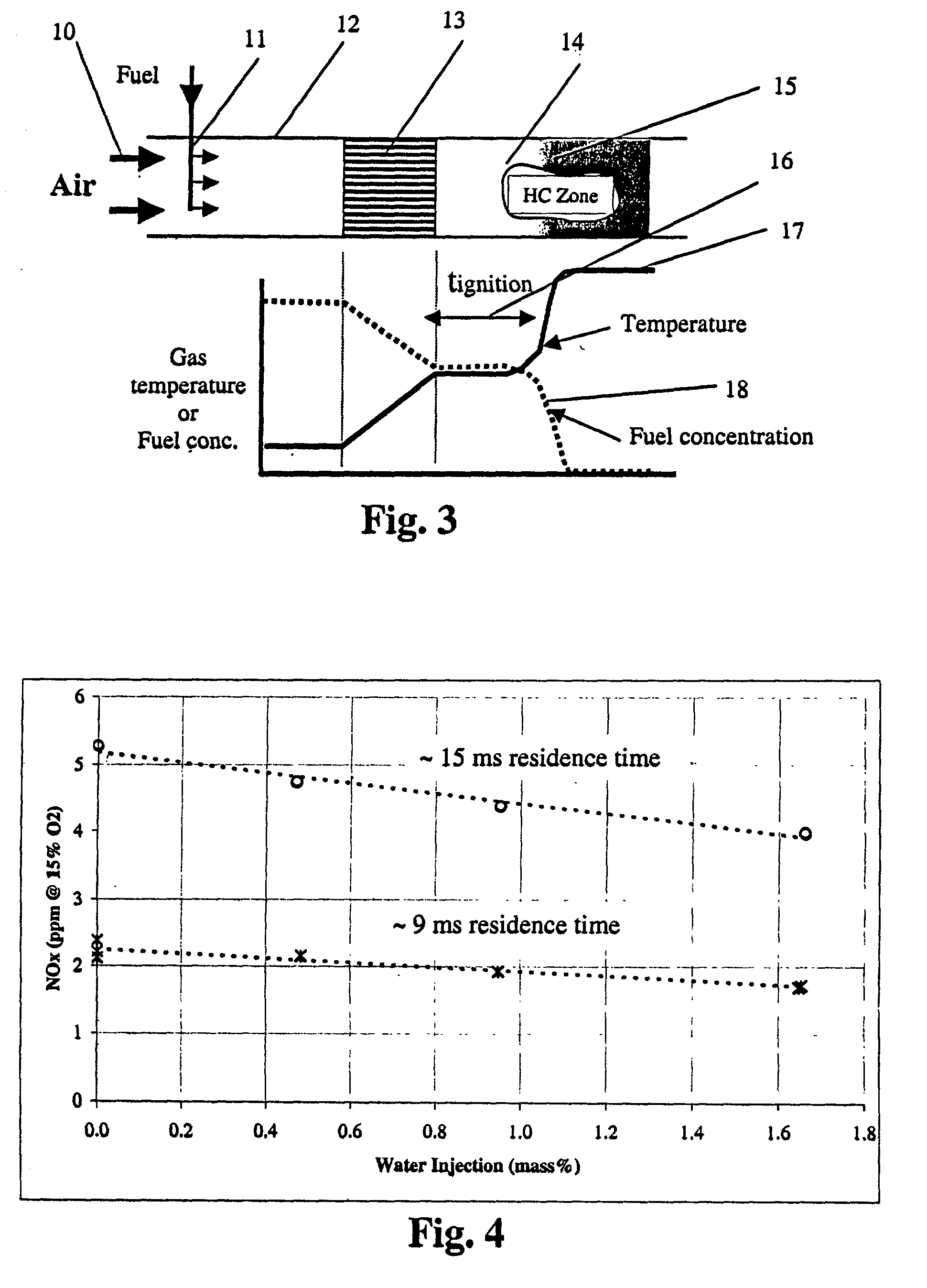Process and apparatus for control of NOx in catalytic combustion systems
a technology of combustion system and control apparatus, which is applied in the direction of combustion type, combustion using catalytic material, turbine/propulsion engine ignition, etc., can solve the problems of unpredictability of water introduction into the catalytic system, and no controllers disclosed by bhargava, touchton, miyauchi, meyer or blevens, etc., to reduce energy consumption and eliminate water effects on catalyst coatings , the effect of reducing the effect of energy consumption
- Summary
- Abstract
- Description
- Claims
- Application Information
AI Technical Summary
Benefits of technology
Problems solved by technology
Method used
Image
Examples
examples
[0049] A comparative bench-scale test was run without added water and with added water at conditions that are typical of a gas turbine catalytic combustor section. In the series of tests of this Example, a two stage catalyst combustion system was run under typical gas turbine combustor section conditions, namely the conditions for a modern high efficiency turbine at 1515.degree. C. post catalyst reaction zone temperature, a gas pressure of 209 psig and at gas flow rates typical of a gas turbine combustor. Air was heated electrically and then fuel and water was introduced into the air stream at the required level prior to entering the catalyst module. The electrical heat was adjusted to control the gas temperature at the catalyst inlet at the required value. A gas sample was withdrawn downstream of the catalyst and sent to an analytical system to measure NO and NO.sub.2 and reported as a total referred to as NO.sub.X.
[0050] NO.sub.X results are shown in Table 1 below. The following p...
PUM
 Login to View More
Login to View More Abstract
Description
Claims
Application Information
 Login to View More
Login to View More - R&D
- Intellectual Property
- Life Sciences
- Materials
- Tech Scout
- Unparalleled Data Quality
- Higher Quality Content
- 60% Fewer Hallucinations
Browse by: Latest US Patents, China's latest patents, Technical Efficacy Thesaurus, Application Domain, Technology Topic, Popular Technical Reports.
© 2025 PatSnap. All rights reserved.Legal|Privacy policy|Modern Slavery Act Transparency Statement|Sitemap|About US| Contact US: help@patsnap.com



